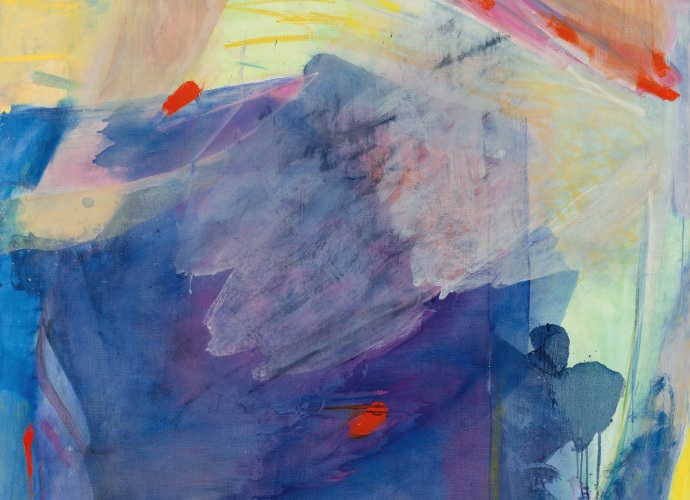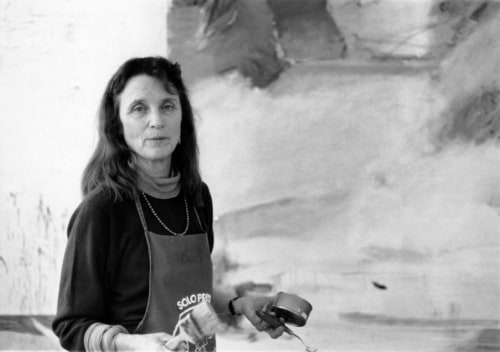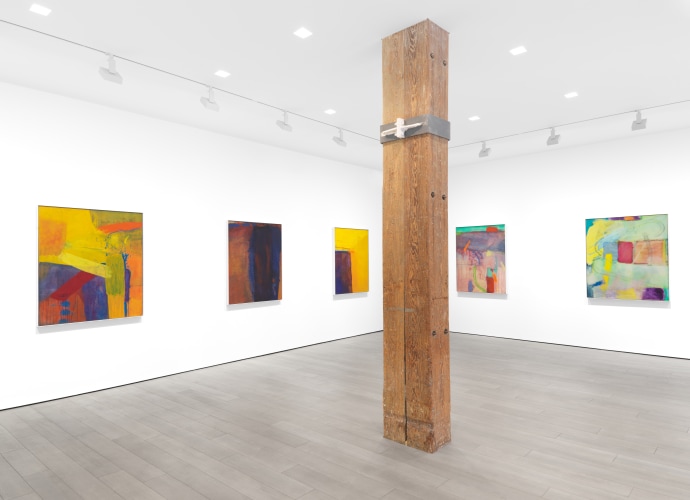
EMILY MASON | ARTNET NEWS
Long-Overlooked Abstract Painter Emily Mason Finally Gets Her Due at a New York Show
19 DECEMBER 2023

Velvet Masonry, 1978, Oil on canvas, 22 x 28 inches
Despite these frustrations, Mason greatly enjoyed her life at center of the global art scene. “That’s one thing about living in New York. You get to see a lot of what other people are doing, where their heads are at, and being able to talk with each other,” she said in 1975. “You feed off it, one way or another.” Nonetheless, she also struggled to get gallery representation in a very male-dominated world. One place of respite was the family’s farm in Vermont, where she would spent long, productive summers in the studio.
Mason gained recognition for her harmonious, fluid compositions made form layers of vibrantly colored pigment, an effect achieved by pouring paint onto the canvas as it lay flat on the floor. These unpredictable experiments in alchemy were sometimes adjusted afterwards, by hand or using a scraper or paintbrush to play with the pooling pigments.
“I like to feel that I work on a painting until something magical happens,” she said in 1975. “Until it becomes something outside of myself, a new vision… You lose a kind of control, but you gain something else.” Mason continued creating paintings using similar techniques until her death in 2019.
This earlier period of Mason’s long career is the subject of a new exhibition “The Thunder Hurried Slow: Emily Mason Paintings, 1968–1979” at Miles McEnery Gallery in New York. Check out more works from the show below.
— Jo Lawson-Tancred

Emily Mason in her Chelsea studio in 1987. Photo: Phong Bui.
© 2023 Emily Mason | Alice Trumbull Mason Foundation/ARS.
A growing number of women abstract painters have had a revival in recent years, after decades of languishing in the shadows of their more famous male peers. The latest to join the crop is Emily Mason, whose turn towards abstract painting saw her follow in the footsteps of her mother Alice Trumball Mason, a co-founder the American Abstract Artists organization in New York in 1936.
Mason’s pioneering mother also introduced a her to a wider artistic circle, which included family friends like Ad Reinhardt, Piet Mondrian, Lee Krasner, Jackson Pollock, Mark Rothko, and Helen Frankenthaler. From this unusually creative upbringing, Mason went on to complete her studies at Cooper Union in 1955, and she recalls feeling encouraged to reject the course’s more rigid, traditional teachings on the advice of Elaine de Kooning and Joan Mitchell.
Soon after graduation, Mason moved to Venice, Italy on a Fulbright grant. It wasn’t until the late 1960s that she permanently resettled in the U.S. with her German husband Wolf Kahn. The couple and their two daughters lived in a small apartment in Greenwich Village, which forced Mason to use her bedroom as a makeshift studio. Due to Kahn’s commercial success, Mason took on more of the domestic labor and spent shorter days in the studio. “The ’70s were difficult times as bringing up children, running a household, and continuing to paint all pulled me in different directions,” she later recalled.
